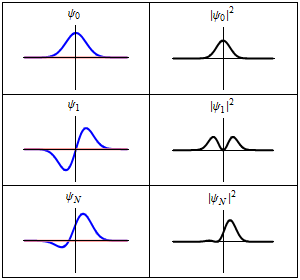 | ||
The Transition dipole moment or Transition moment, usually denoted
Contents
A single charged particle
For a transition where a single charged particle changes state from
where q is the particle's charge, r is its position, and the integral is over all space (
In other words, a transition dipole moment is simply an off-diagonal matrix element of the position operator, multiplied by the particle's charge.
Multiple charged particles
When the transition involves more than one charged particle, the transition dipole moment is defined in an analogous way to an electric dipole moment: The sum of the positions, weighted by charge. If the ith particle has charge qi and position operator ri, then the transition dipole moment is:
In terms of momentum
For a single, nonrelativistic particle of mass m, in zero magnetic field, the transition dipole moment can alternatively be written in terms of the momentum operator, using the relationship
This relationship can be proven starting from the commutation relation between position x and the Hamiltonian H:
Then
However, assuming that ψa and ψb are energy eigenstates with energy Ea and Eb, we can also write
Similar relations hold for y and z, which together give the relationship above.
Analogy with a classical dipole
A basic, phenomenological understanding of the transition dipole moment can be obtained by analogy with a classical dipole. While the comparison can be very useful, care must be taken to ensure that one does not fall into the trap of assuming they are the same.
In the case of two classical point charges,
In the presence of an electric field, such as that due to an electromagnetic wave, the two charges will experience a force in opposite directions, leading to a net torque on the dipole. The magnitude of the torque is proportional to both the magnitude of the charges and the separation between them, and varies with the relative angles of the field and the dipole:
Similarly, the coupling between an electromagnetic wave and an atomic transition with transition dipole moment
Origin
When an atom or molecule interacts with an electromagnetic wave of frequency
Applications
The transition dipole moment is useful for determining if transitions are allowed under the electric dipole interaction. For example, the transition from a bonding
of an electronic transition within similar atomic orbitals, such as s-s or p-p, is forbidden due to the triple integral returning an ungerade (odd) product. Such transitions only redistribute electrons within the same orbital and will return a zero product. If the triple integral returns a gerade (even) product, the transition is allowed.
